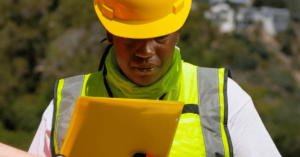When you’re in charge of a nursery setting, safeguarding children should be your top priority.
As children grow, they learn from the people around them so it’s vital that they’re brought up in a safe environment.
To keep children protected, you need to ensure you have a safeguarding policy in place and have carried out the necessary health and safety precautions to keep them from harm.
The importance of protecting children
Safeguarding children in your care is something that should be taken seriously. Every child has a right to access care that supports and nurtures them, rather than one that puts them at risk.
The Early Years Foundation Stage framework specifies that ‘providers must take all necessary steps to keep children safe and well,’ ensuring that children’s health is at the forefront.
Training staff to be aware of health and safety risks, as well as designating a safeguarding officer is crucial. That way, everyone is aware of the dangers posed in the setting and the best way to care for the children.
Key principles of safeguarding in play environment
As a huge part of a child’s life, childcare workers have a responsibility to follow safeguarding measures and spot any signs of abuse and/or neglect. Safeguarding policies should be in place so that everyone understands what to look out for, and how to act fast to get the best outcomes for children in the setting.
The six principles of safeguarding children are:
- Empowerment – empowering children so they’re confident enough to make decisions
- Prevention – by putting policies and procedures in place to protect children
- Protection – supporting and defending a child’s rights
- Proportionality – making the right decisions and ensuring the correct response to a child’s needs
- Partnerships – forming partnerships with the local community to make sure everyone has a part to play in safe and effective care
- Accountability – on an individual and organisational level, to see that all concerns are addressed and children are protected
These principles ensure a child’s welfare and wellbeing are prioritised, and childcare workers can speak up on their behalf, if necessary.
Child protection legislation
The Children’s Act 1989 was put in place to support children and provide guidance for adults who may have concerns for a child. Over the years, it’s been amended to emphasise the need for partnerships between agencies, and the responsibilities of those in a professional position.
If any childcare provider is aware of any concerns for a child’s welfare, they should report it to the relevant authorities so they can intervene as quickly as possible.
As part of your safeguarding policy, you should recruit suitable people for childcare positions by conducting criminal records checks as well as barred list checks. You should also make a referral to the Duty and Disclosure Barring Service if you dismiss any of your staff in order to protect children in the setting.
Children should be protected from harm at all times, and the nursery setting should be a safe place for them to develop and grow.
How to manage risk in a play environment
A risk assessment should be something that is continually reviewed and acted upon, in order to keep everyone in the setting safe.
- Your risk assessment should outline:
- What the hazards are (falls, manual handling)
- Who is at risk (staff, children, visitors)
- What actions you’re currently taking (putting signs up, giving staff training)
- What more you could do (carrying out repairs)
- Who will take the action and when (the manager, a nursery assistant)
- When the action was completed (the date that measures were put in place)
Staff training is essential to make sure that responsibilities are shared, and risk assessments are taken seriously. The Health and Safety Executive provides a template for you to follow.
Managers of childcare settings should ensure that the relevant training is given, and there are sufficient provisions to protect people in the setting.
Protect children in your care with the right qualifications
Giving your team training from a high-quality provider can help them to expand their knowledge of child protection legislation, and occupational safety.
Our childcare programmes offer qualifications at all levels to support your staff whether they’re just starting out or stepping up to become managers.
See our full list of CCPLD, and Playwork qualifications here.







